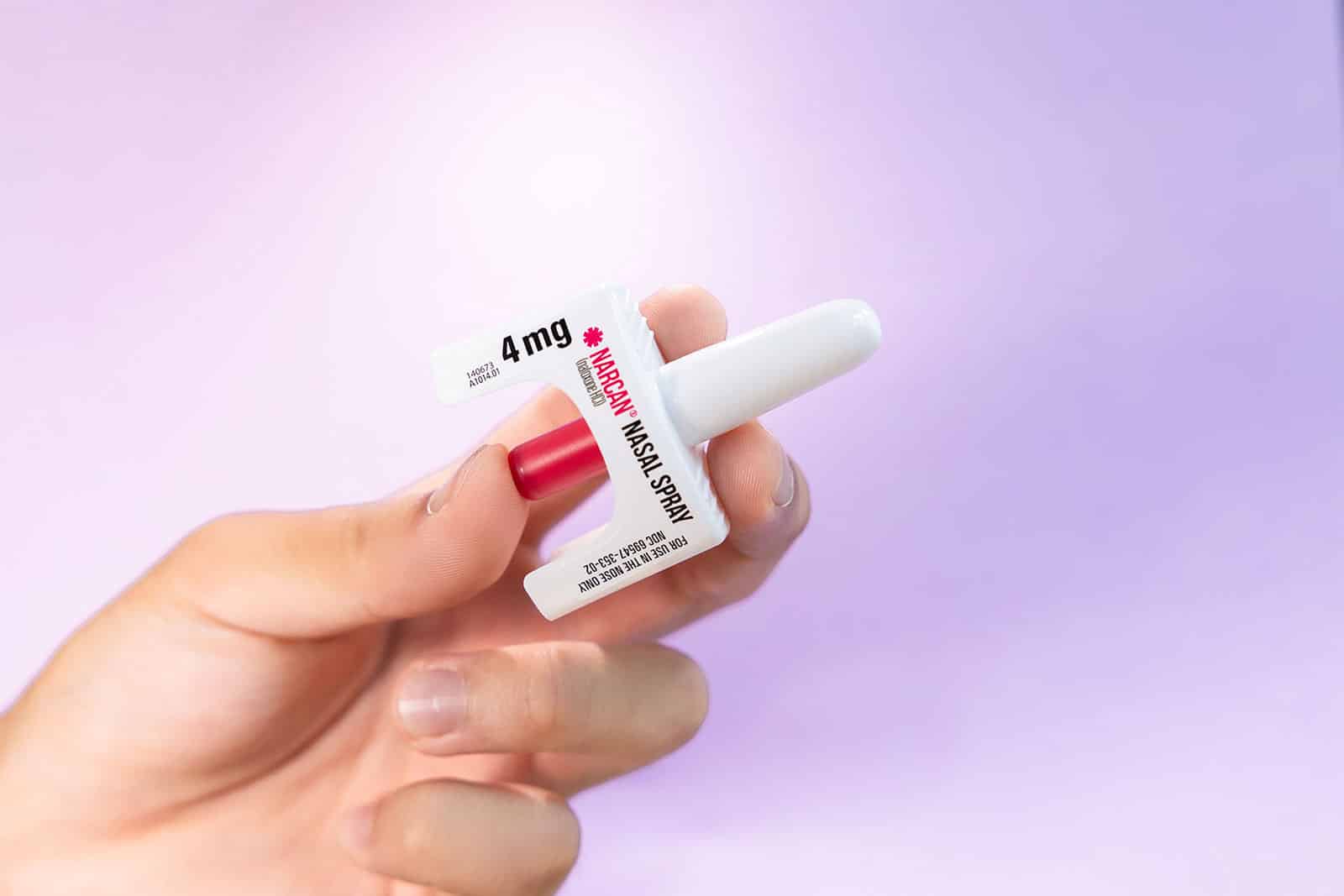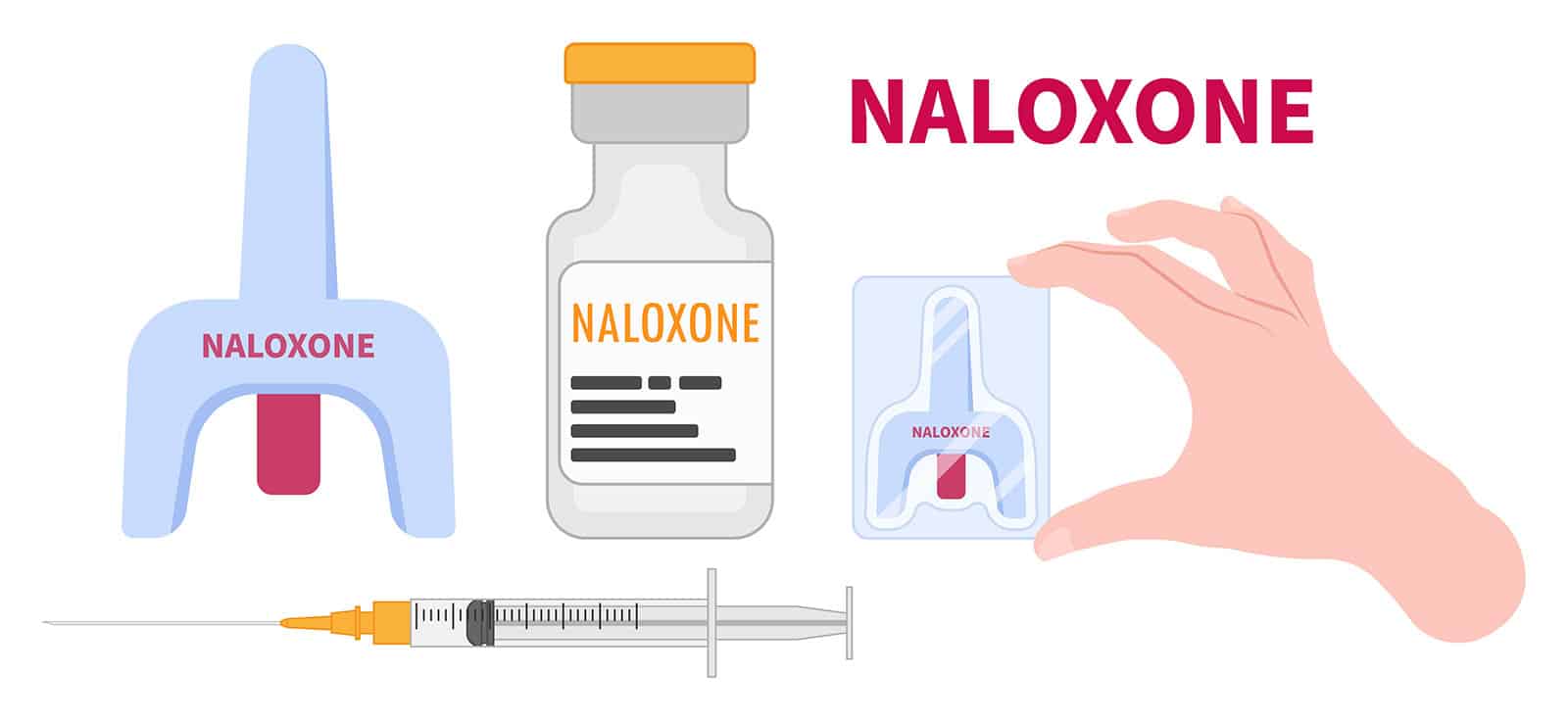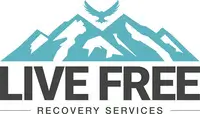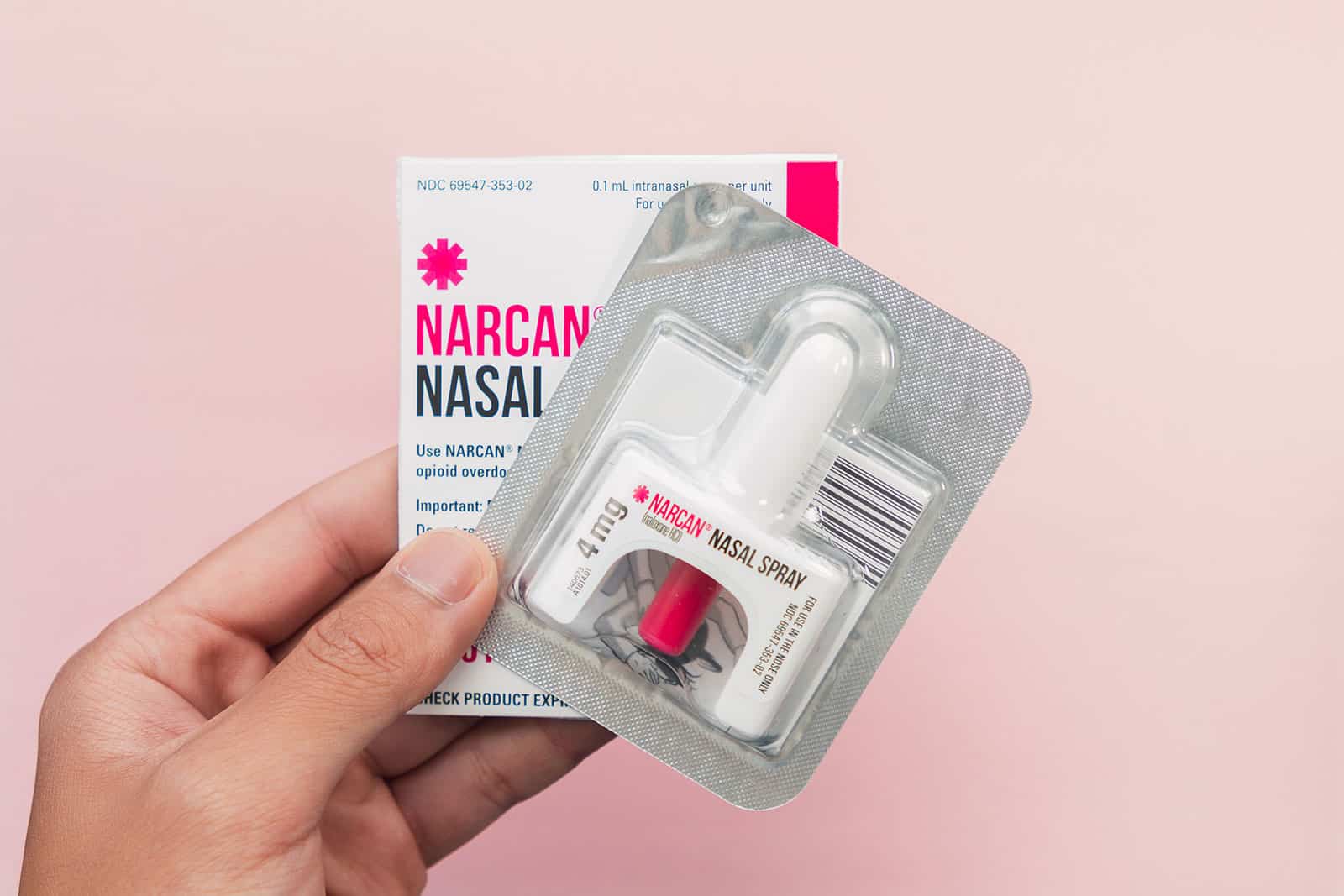Opioid addiction is a serious public health problem that has affected millions of lives. Between 2002 and 2022, opioid overdose deaths have risen dramatically, according to the National Center for Health Statistics. In response to this crisis, first responders, drug stores, and even retail stores now often keep Narcan (naloxone) readily available. This opioid antagonist is a crucial tool in combating the life-threatening effects of an opioid overdose.
TL;DR – Narcan lasts 30 to 90 minutes, but opioid effects can return after it wears off. Seek medical help immediately after use.
What Is Narcan?
Narcan is an over-the-counter medication designed to quickly reverse the effects of an opioid overdose. It works on many different types of prescription opioids, like hydrocodone and codeine, as well as opioid-based street drugs. The generic name for Narcan is naloxone, and the active ingredient is naloxone hydrochloride. When combined with prompt medical help, Narcan nasal spray can help prevent overdose deaths. However, it’s important to note that Narcan does not work on non-opioid substances.
How Narcan Works
Naloxone, the opioid antagonist in Narcan, works in three different ways: intranasal (through the nasal passages), intravenous, or intramuscular. Upon entering the body, Narcan works to block the effects of opioid drugs by reversing the slowed or stopped breathing that an opioid overdose causes. This is done by attaching to opioid receptors located in the brain, preventing opioids from reaching these receptors. The process typically takes between two and three minutes, so Narcan is fast-acting.
How Long Does Narcan Last?
The effects of Narcan can last between 30 and 90 minutes, depending on factors such as the dose of naloxone, the person’s physiology, the type of drug(s) consumed, and other key factors. However, opiates typically stay in the system longer, so careful observation of the patient is required after the dose is administered. As a rule of thumb, we recommend staying with the patient for at least two hours because death from overdose is still possible, and the patient may need to be kept stable until medical professionals arrive. After waking up, it’s normal for the patient to go through opioid withdrawal symptoms because Narcan blocks the effects of these opiates. Depending on the person’s physiology, withdrawal symptoms can include:
- Muscle aches
- Anxiety
- Severe agitation
- Insomnia
- Nausea and vomiting
- Sweating and chills
Narcan’s Limitations

Despite its life-saving effects, Narcan has some limitations. Among these are:
- Does not work on non-opiates: Naloxone does not work on non-opiate drugs. These include substances like benzodiazepines (e.g., Valium, Xanax, Klonopin), cocaine, methamphetamines, or alcohol.
- Wears off fast: Narcan can keep the patient stable, but it’s only a short-term solution designed to keep the patient stable until they can be seen by a doctor or paramedic. Once Narcan wears off, it’s possible for overdose symptoms to return. This is why we recommend staying with the patient after dosage.
- Not recommended for use on someone who is allergic, nursing or pregnant: These people may experience allergic reactions or other adverse reactions to Narcan. Consult a healthcare provider to see if the benefits outweigh potential risks before administering.
What Are The Signs That Another Dose Is Needed?
Sometimes, subsequent dosages are needed. As a rule of thumb, you should watch for any of the following signs:
- Extreme drowsiness
- Sluggish breathing or no breathing at all
- Blue lips or fingertips
If you detect any of the above signs, administer a second dose of Narcan. Consult a doctor or paramedic before administering further dosages.
Why Is Professional Treatment Needed After Use?
Narcan is only designed to keep the patient stable; it is not a cure. Proper treatment requires professional, comprehensive medical care by a paramedic or doctor. Your doctor will know how to properly treat the patient once they arrive at a medical facility.
Once the patient has recovered, detox is recommended. Live Free Recovery Services offers in-house medical detoxification services designed to safely manage withdrawal symptoms and uses evidence-based therapies designed to create a support network among family members and other patients. We also offer FDA-approved medication-assisted treatments (MAT) designed to reduce cravings and prevent relapse. We use buprenorphine, methadone, and other medications to help in your or your loved one’s safe and effective recovery.
Common Opioids Reversed By Narcan
Narcan works in combating overdose from common opiate-based medications such as:
- Morphine – A non-synthetic opiate-based pain reliever made from the opium poppy. It is commonly injected or ingested in pill form. Morphine can produce dangerous side effects when combined with certain other medications, some of which can lead to death if proper medical treatment is not obtained.
- Oxycodone – A commonly prescribed opioid often used as a pain reliever. Like morphine, oxycodone can produce dangerous side effects that can lead to death when mixed with certain other medications. It is synthesized from thebaine, a chemical found in poppy plants.
- Fentanyl (and synthetic derivatives) – A pain reliever that is only used for extreme pain or pain caused by surgery recovery. Fentanyl has become the latest drug of choice for many who suffer from addiction. Mixing with certain other drugs, especially Heroin, produces dangerous side effects including:
- Unresponsiveness
- Bluing or graying skin tone
- Small pupils (constricted pupils)
- Choking/Gurgling sounds
- Slow breathing and/or heartbeat
- Heroin – Heroin is a street drug synthesized from the seed pods of the opium poppy plant.
How Do I Obtain Narcan?
Narcan is easily available in both over-the-counter and prescription options. Certain pharmacies and drug stores may also offer Narcan, either as a stand-alone nasal spray or as part of an overdose kit.

How Do I Seek Help For My Addiction?
The first step in finding help, of course, is to recognize that you have a problem. Most major cities have resources available to help. Addiction treatment centers, crisis hotlines, and other community resources all help people deal with drug addiction every day. Friends, family, and caregivers are also great resources at your disposal.
If you cannot cope or just need help, there are addiction treatment centers available. Live Free Recovery Services has developed a support-based treatment plan that can help you take your first steps on the road to recovery and leading a normal, happy life.
Conclusion
If you or a loved one is struggling with opioid addiction, please remember that you are not alone, and there are many resources available to help you. Live Free Recovery Services offers addiction treatment at a reasonable price. It is recommended that you seek addiction treatment and mental health support after an overdose in order to prevent another overdose. Don’t try to fight your addiction alone. Contact Live Free Recovery Services today! Our professional, compassionate doctors can help you overcome your addiction. Remember, drugs are never worth sacrificing your life over.


